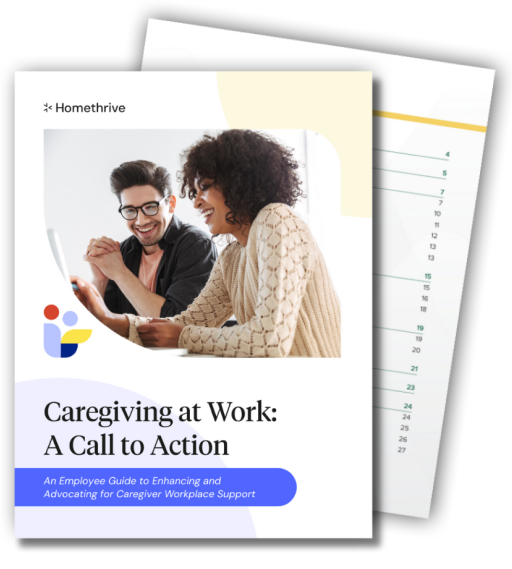Imagine Sarah, a mother of two young children, both under the age of five. She wakes up early daily to prepare the kids for daycare, ensures they have everything they need, and then rushes off to work. The hours at the office drag on, but her mind is never fully there.
She’s thinking about the baby with a fever, the endless pile of laundry, and the dinner she still has to cook when she gets home. By the time the workday ends, she’s mentally and physically drained, but her responsibilities are far from over.
Sarah is a caregiver, but no one knows the weight of the emotional and physical strain she’s carrying. And, like many others in her situation, she’s slowly moving toward burnout.
The Reality of Caregiver Burnout
Caregiver burnout isn’t just a concept—it’s a real, often silent struggle affecting millions. In Sarah’s case, juggling her career and raising young children is exhausting. But burnout doesn’t discriminate. It can impact parents of children with disabilities, individuals taking care of aging relatives, and even those caring for spouses with chronic illnesses. The relentless nature of caregiving can slowly wear someone down without them even realizing it’s happening until they’re already deeply entrenched in its grip.
Caregiver burnout is often overlooked because it’s not as visible as other types of stress. It’s a blend of exhaustion, emotional drain, and the feeling trapped between competing demands. Caregivers like Sarah may appear fine to others—functioning at home and work—but they carry a heavy load beneath the surface.
Research shows that nearly 73% of adults in the U.S. have some form of caregiving responsibilities. These responsibilities can include caring for children, parents, spouses, other relatives, or friends with disabilities or chronic illnesses. According to SP Global, 67% of family caregivers have difficulty balancing their jobs with caregiving duties. Whether it’s a parent staying up late to care for a sick child or someone managing the needs of an elderly relative with dementia, the emotional and physical toll can be overwhelming. These caregivers are often stretched thin, feeling like they must be everything to everyone but rarely have the support they need.
Understanding the Impact of Caregiver Burnout
Caregiver burnout varies from person to person, but it shares a few universal characteristics. At first, it’s small moments of stress—feeling drained after a long day, getting irritated more easily, or struggling to concentrate at work. For Sarah, it’s the constant feeling of not doing enough at work or at home. She’s always running on empty but doesn’t know how to stop. She had heard the term “burnout” before but never really thought it applied to her. She thought it was something other people experienced, not someone who had a handle on everything.
But the truth is that caregiver burnout doesn’t just happen overnight. It creeps in, slowly wearing down your physical and mental health until you find yourself completely exhausted and unable to recharge.
Recognizing the Stages of Caregiver Burnout
There are distinct stages of caregiver burnout, beginning with enthusiasm and optimism.
The Initial Stage: At this initial stage, caregivers tackle responsibilities with energy and determination, believing they can effectively manage all demands.
The Honeymoon Stage: The honeymoon phase fades into stagnation as routine sets in. Caregivers continue to function but find less satisfaction, feeling that their efforts go unnoticed. Energy levels decline as personal needs are often put on the back burner to attend to caregiving duties.
The Frustration Stage: Frustration marks the third stage. Resentment builds as caregivers question their effectiveness and feel trapped. Physical symptoms, such as headaches, disrupted sleep, and frequent illnesses, reflect the body’s stress response.
The Apathy Stage: In the apathy stage, caregivers merely go through motions, emotionally detached from their role. They may withdraw from social connections and neglect self-care entirely, creating a dangerous cycle.
The Full Burnout Stage: Full burnout represents complete physical, emotional, and mental exhaustion. Caregivers may experience depression, frequent illness, and an overwhelming sense of hopelessness.
Recognizing the Signs of Caregiver Stress
It wasn’t until Sarah felt her patience wearing thin that she realized something was wrong. Her temper was shorter, she felt more exhausted than usual, and the guilt of being unable to give her best at work or at home became overwhelming. Her joy was fading, replaced by a constant weight of worry. These weren’t just signs of being tired; they were the red flags of caregiver stress.
What is a Sign of Caregiver Stress?
When someone is constantly caregiving, they often experience what’s known as Caregiver Stress Disorder. This is more than just occasional frustration—it’s a profound sense of being emotionally, physically, and mentally exhausted. For Sarah, the stress manifested in tears that came more quickly, a lack of motivation, and a general sense of hopelessness that overshadowed her once-positive outlook. It was a slow decline that crept into every corner of her life until it became almost impossible to ignore.
Caregiver stress doesn’t just stay in the background—it begins to interfere with daily functioning. There are days when Sarah finds it hard to get out of bed in the morning, not because she’s physically ill but because the emotional weight of caring for her children and managing her work responsibilities feels crushing. This isn’t a temporary feeling of stress—it’s the beginning of a more profound burnout that can take months or even years to recover from if not adequately addressed.
For others, the consequences of caregiving can even lead to caregiver post-traumatic stress disorder (PTSD). If a caregiver is involved in taking care of someone who has experienced trauma or is managing a severe illness, the emotional burden can trigger post-traumatic stress symptoms.
Sarah didn’t experience PTSD herself, but she knew that the stress of caregiving was beginning to affect her ability to function in everyday situations. She was always on edge, always anticipating the next problem or crisis. Even when she wasn’t actively caregiving, the anxiety lingered.
The Workplace: An Unseen Contributor to Burnout
Sarah’s story, like many others, is shaped not only by the demands of caregiving at home but also by the expectations placed on her at work. She loves her job, but as the stress of caregiving builds, it becomes harder to juggle both responsibilities.
One of Sarah’s biggest challenges is her management’s lack of understanding. She’s a dedicated employee who consistently arrives on time, meets deadlines, and contributes valuable ideas. However, the pressure intensifies when she needs to take a sick day for her child or leave work early to handle an urgent home emergency.
The expectation that she should always be available and fully present at work is unspoken but understood. Sarah feels she’s failing in both roles without compassion from her employer. The stress from both sides compounds, and her productivity begins to slip.
Employee Stigma Within the Workplace
The stigma surrounding caregiving in the workplace can be one of the most significant obstacles for those dealing with burnout. Many employees feel that their caregiving role is not valued by their employers, which can lead to feelings of isolation and frustration. Employees like Sarah often feel torn between their dedication to their families and the demands of their careers, which can leave them feeling guilty, ashamed, or unsupported.
It’s not just Sarah. Many caregivers feel the strain of insufficient PTO and leave policies. Taking time off can feel impossible when managing your work, family, and caregiving duties. Sarah constantly worries that if she takes a day off to care for her child, her job may be at risk. The guilt of missing work and the exhaustion from caregiving create a perfect storm that can lead to burnout.
In an ideal world, workplaces would offer more transparency and empathy, understanding that caregiving is a significant responsibility that often leads to emotional and physical exhaustion. However, many caregivers face the pressure of working in environments that don’t account for their circumstances.
The lack of flexible work options, like remote work or flexible hours, can exacerbate burnout. Sarah finds herself stuck between the need to care for her children and the demands of a rigid 9-to-5 schedule. If she could work from home on days when her child is sick or adjust her hours to attend an important doctor’s appointment, the burden would be easier to bear. But the lack of flexibility makes everything feel more overwhelming.
Practical Solutions: A Path Toward Balance
Despite all the challenges, there is hope. Sarah found some relief when she started setting boundaries at work and at home. One of her first steps was to discuss her caregiving role with her employer. While it wasn’t easy, she realized that transparency was crucial. By explaining her situation to her manager and requesting accommodations, such as the ability to leave early for medical appointments or work from home occasionally, she was able to find a balance.
Additionally, Sarah’s workplace also began offering caregiving benefits. Access to serviced that could coordinate daycare, research support groups, and provide her with the answers and assistance she needed allowed Sarah to manage her responsibilities without sacrificing her well-being. At the office she was also able to join the parent and caregiving ERG to find other colleagues that were having similar experiences.
These programs didn’t just give Sarah the tools she needed—they showed her that her well-being mattered to her employer. The sense of validation played a significant role in her recovery, reminding her that she wasn’t alone in this.
For caregivers like Sarah, scheduling flexibility is essential. She began to carve out time for herself, whether for a quick walk during lunch or scheduling regular breaks throughout the day. These actions helped her feel more centered and less overwhelmed. And though it wasn’t always easy, she made self-care a priority, learning that she couldn’t pour from an empty cup.
At home, Sarah began to delegate tasks where possible. She realized that she didn’t need to do everything herself. Reaching out for help from her partner, family members, or even trusted friends made a significant difference in managing her day-to-day tasks.
Most importantly, she learned to let go of the myth of perfection. Her children didn’t need the perfect dinner every night, and her house didn’t need to be spotless. Sarah began to let go of the guilt and embraced the idea that doing her best was enough.
The Road to Recovery
For Sarah, the journey toward balance hasn’t been easy. It’s taken time, reflection, support from her workplace and family, and a great deal of determination. She’s learned that caregiving isn’t something you do in isolation—it requires a network of people who understand and support you. It’s also about recognizing your limits and letting yourself ask for help.
When we acknowledge the weight of caregiving, both in the home and at work, we can create a society that supports those who give so much of themselves to others. Caregiver burnout is real, but with the right tools and support, it doesn’t have to define you.
By partnering with Homethrive, you can help employees reclaim valuable time and energy to focus on their work, families, and personal well-being. Show your team they don’t have to choose between their careers and caregiving responsibilities. Contact us today to explore how Homethrive can enhance your employees’ well-being and productivity.







